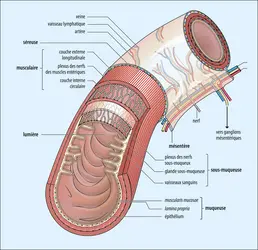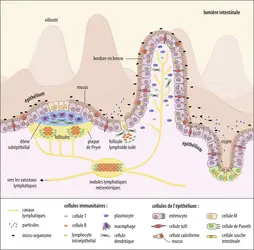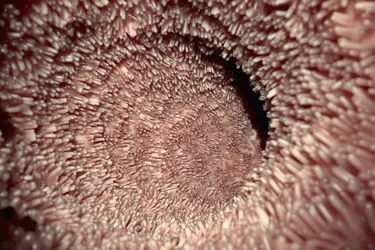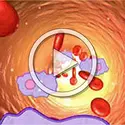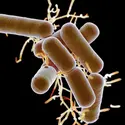IMMUNITÉ INTESTINALE
Bibliographie
F. Gerbe, C. Legraverend & P. Jay, « The intestinal epithelium tuft cells: specification and function », in Cellular and Molecular Life Sciences, vol. 69, no 17, pp. 2907-2917, 2012
F. Gerbe, J. H. van Es, L. Makrini et al., « Distinct ATOH1 and Neurog3 requirements define tuft cells as a new secretory cell type in the intestinal epithelium », in Journal of CellBiology, vol. 192, no 5, pp. 767-780, 2011
F. Gerbe, E. Sidot, D. J. Smyth et al., « Intestinal epithelial tuft cells initiate type 2 mucosal immunity to helminth parasites », in Nature, vol. 529, no 7585, pp. 226-230, 2016
M. R. Howitt, S. Lavoie, M. Michaud et al., « Tuft cells, taste-chemosensory cells, orchestrate parasite type 2 immunity in the gut », in Science, vol. 351, no 6279, pp. 1329-1333, 2016
W. Lei, W. Ren, M. Ohmotoet al., « Activation of intestinal tuft cell-expressed Sucnr1 triggers type 2 immunity in the mouse small intestine », in Proceedings of the National Academy of Sciences of the USA, vol. 115, no 21, pp. 5552-5557, 2018
X. C. Luo, Z. H. Chen, J. B. Xue et al., « Infection by the parasitic helminth Trichinellaspiralis activates a Tas2r-mediated signaling pathway in intestinal tuft cells », in Proceedings of the National Academy of Sciences of the USA, vol. 116, no 12, pp. 5564-5569, 2019
J. von Moltke, M. Ji, H. E. Liang & R. M. Locksley, « Tuft-cell-derived IL-25 regulates an intestinal ILC2–epithelial response circuit », in Nature, vol. 529, no 7585, pp. 221-225, 2016
M. S. Nadjsombati, J. W. McGinty, M. R. Lyons-Cohen et al., « Detection of succinate by intestinal tuft cells triggers a type 2 innate immune circuit », in Immunity, vol. 49, no 1, pp. 33-41, 2018
C. Schneider, C. E. O'Leary, J. von Moltke et al., « A metabolite-triggered tuft cell-ILC2 circuit drives small intestinal remodeling », in Cell, vol. 174, no 2, pp. 271-284, 2018
O. Takeuchi& S. Akira, « Pattern recognition receptors and inflammation », in Cell, vol. 140, no 6, pp. 805–820, 2010
J. N. Rao & J.-Y. Wang, « Intestinal architecture and development » in Regulation of GastrointestinalMucosalGrowth, Morgan & Claypool Life Sciences, 2010
J. Zhu& W. E. Paul, « CD4 T cells : fates, functions, and faults », in Blood, vol. 112, no 5, pp. 1557-1569, 2008.
La suite de cet article est accessible aux abonnés
- Des contenus variés, complets et fiables
- Accessible sur tous les écrans
- Pas de publicité
Déjà abonné ? Se connecter
Écrit par
- François GERBE : chargé de recherche CNRS, Institut de génomique fonctionnelle, Montpellier
- Emmanuelle SIDOT : docteure, postdoctorante, Kennedy Institute, Oxford University, Oxford (Royaume-uni)
Classification
Médias
Autres références
-
IMMUNITÉ, biologie
- Écrit par Joseph ALOUF , Michel FOUGEREAU , Dominique KAISERLIAN-NICOLAS et Jean-Pierre REVILLARD
- 21 509 mots
- 11 médias
Les muqueuses sont le site principal de pénétration des agents infectieux. Chaque muqueuse dispose d'un ensemble de mécanismes non spécifiques destinés à éliminer ou à détruire ces agents pathogènes : mouvements ciliaires de l'arbre respiratoire, acidité gastrique et enzymes des glandes digestives,... -
MICROBIOME HUMAIN
- Écrit par Encyclopædia Universalis
- 3 816 mots
- 3 médias
Un autre rôle des microbiotes concerne le développement du système immunitaire. Les souris axéniques présentent un système immunitaire immature et doivent être gardées dans un espace stérile car elles sont particulièrement sensibles aux infections. La colonisation de leur intestin par Bacteroides...

